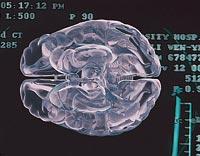MRI to prevent Alzheimer's

To alleviate the effects of Alzheimer's it is essential to detect the disease as soon as possible. It is advisable to diagnose them before the first symptoms appear and now it seems that an MRI technique developed in the mouse can be adequate to achieve this.
Currently, medical diagnosis is made after explanation of confusion and memory problems. However, 10 or 20 years before the onset of these symptoms, disease-causing protein plaques have already begun to form in the brain. Unfortunately, in living beings it was not possible to see these plates from the beginning.
In Japan, however, they have taken an important step. Researchers have relied on the normal magnetic resonance technique and used a compound attached to the plaques to make plaques visible. In fact, in the images provided by conventional techniques, plaques do not protrude from other brain structures. With this compound the plates are easily separated. The compound is a fluoride derivative that is not present in the human body or mice. According to studies done with the mouse, simply inject the compound to tie it to the plates.
Thanks to this they have managed to highlight the plates. This will detect and treat Alzheimer's long before the first symptoms appear.





